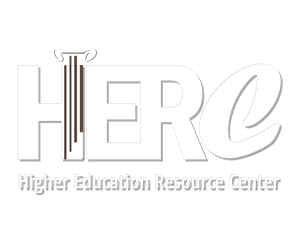Education is Not "One Method Works for All''
We Offer Personalized Education
Not All Students Learn the Same Way
Would you agree that all students are created equal and should receive the same type of education? For centuries colleges and universities have treated students equally. Students sit in classrooms across the nation and listen to professors provide the instruction, taking notes, reading books, and taking tests. However, we are not all created out of the same mold – we were all endowed by God with different characteristics that make each one of us unique. Because of this, we do not all learn best the same way. There are three basic learning modalities that we naturally fall under: Some people are visual learners, others are auditory learners, and others prefer a kinesthetic learning style (with as much interaction as possible). Not everyone fits into one of these categories, as some are a blend of these learning styles, leaning more toward one style, but also enjoying another style.

Many students are visual learners: There are many students who remember a portion of what they hear in the classroom, however, their ability to recall the information is greatly enhanced if they are able to see the subject at hand. On SCORATES, we link students to hundreds of courses designed for visual learners, including Hollywood-style video courses digitally streamed on the web. Many of these college video courses are visually captivating and have won national and international acclaim, including the coveted Emmy. These video courses are excellent resources for those who are visual learners. When they see the subject brought to life on the screen, they remember much more than they would if they had simply read or heard instruction in the subject.

Auditory learners are those who learn best by hearing the instruction. This has been the foundation of higher education on college campuses throughout history. Students on campuses around the world sit in classrooms and listen to professors lecturing …thus the instruction is delivered for students to learn in an auditory fashion. However, as we pointed out on the web page on this site regarding barriers to classroom-based education, many adult learners are not able to attend on campus. With the resources that we have linked to SOCRATES ®, there are more than a hundred courses in which the universities have cameras mounted to the ceilings in their classrooms and microphones to capture the lectures from the professors and questions the students pose. When our students can access these resources, it can enhance their learning experience.

Some people, especially those who struggle with ADD, have a difficult time staying focused on the instruction when they are watching video courses. Their mind even drifts when they are listening to professors lecture. However, with online instruction, they are constantly having to click the mouse and scroll through the web pages to work through the instruction. These are the students that learn best with hands-on interaction, so we call them kinesthetic learners. They excel with classes that require their attention to be refocused every few minutes, such computer-based instructional delivery with its digital imagery and interactive environment. We connect students to thousands of these courses that can be downloaded from the Internet to their computers via SOCRATES ®.
What type of learner are your employees? Some can readily tell what type of learner they are, while others may not be sure. Some may not be entirely one type of learner, but may be a blend of two, or even all three. We encourage employees to be introspective – assess themselves: What type of instruction works best for them as individuals? Does the college of university of their choice offer different types of instructional methodology? Regardless, we connect employees to instructional resources on SOCRATES ® designed to address each of the preferred learning styles.
Use These to Get the Best Grades Possible in Courses From the College or University of Your Choice:
Many students that we support taking courses from the college or university of their choice use these tuition-free courses described above in hundreds of subjects to follow along with the instruction they are receiving from their instructor. That may help them get the best possible scores as they are able to see the subjects come to life on the screen (for visual learners), hear professors describe the subject to students in their classrooms (for auditory learners), or read how other professors explain the topics to their classes online. With this type of support, students who would have otherwise failed or withdrew from courses are able to make much better grades. Some even use these to gain the knowledge they need to earn college credit by examination, which can help accelerate their progress to completion at the college or university of their choice. Our goal is your success and these resources can help you succeed in earning the degree you desire.

